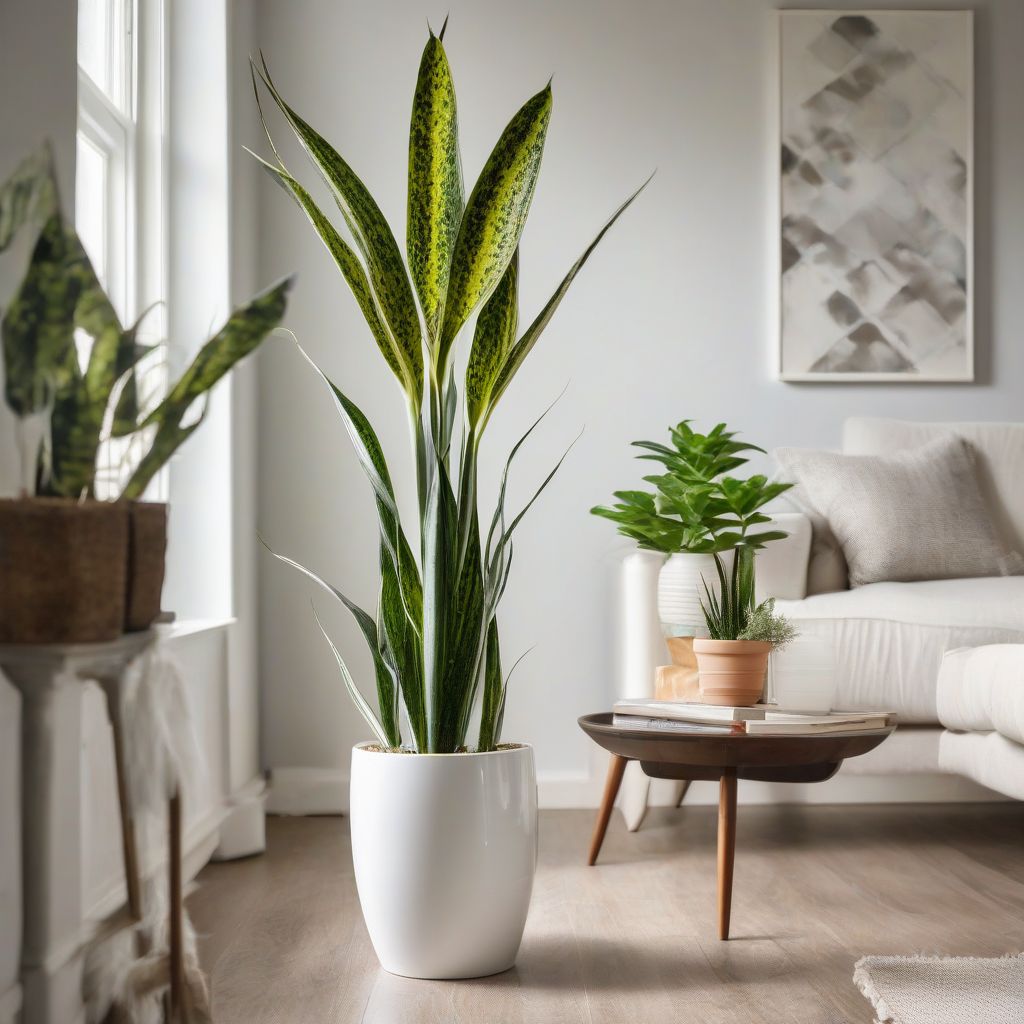Ever walked into a room and felt instantly refreshed by the vibrant greenery adorning a sunny corner? Indoor plants do more than just add a splash of color and life to our homes; they act as natural air purifiers, quietly working to filter out toxins and improve the air we breathe.
But with so many beautiful options available, how do you choose the best plants to purify the air in your home? Don’t worry, it’s easier than you think! As a certified nutritionist and meal planning coach, I’m passionate about creating a healthy living environment, and clean air is a big part of that. Let’s explore the world of air-purifying plants and find the perfect green companions for your space.
Understanding Indoor Air Pollution
Before we dive into the specific plants, it’s helpful to understand why air purification is so important, even indoors. We often think of outdoor air as being more polluted, but indoor air can be 2-5 times more polluted than outdoor air, according to the EPA.
Common Indoor Air Pollutants
- Formaldehyde: Found in furniture, carpets, and cleaning products.
- Benzene: Present in paints, solvents, and tobacco smoke.
- Trichloroethylene: Used in dry cleaning, adhesives, and some paint removers.
- Xylene: Found in varnishes, paints, and gasoline.
- Ammonia: Common in cleaning products and fertilizers.
These pollutants can trigger allergies, irritate our eyes and respiratory system, and even contribute to more serious health problems in the long run.
Top Air-Purifying Plants
Now for the fun part – choosing your plants! This list features some of the most effective air purifiers, each with its unique strengths and care requirements:
1. Snake Plant (Sansevieria trifasciata)
 Snake Plant for Clean Air
Snake Plant for Clean Air
Known for its resilience and striking sword-like leaves, the Snake Plant is a champion at removing toxins like formaldehyde, benzene, and xylene from the air. It’s also incredibly low-maintenance, tolerating low light conditions and infrequent watering.
2. Spider Plant (Chlorophytum comosum)
Beloved for their air-purifying abilities and ease of propagation, Spider Plants are a popular choice for beginners. They effectively filter out formaldehyde and xylene and look stunning in hanging baskets, allowing their baby spiderettes to cascade down.
3. Peace Lily (Spathiphyllum)
Elegant and effective, the Peace Lily not only cleanses the air of pollutants like formaldehyde, benzene, and ammonia but also adds a touch of tranquility with its graceful white blooms. It prefers moderate to low light conditions and enjoys moist soil.
4. ZZ Plant (Zamioculcas zamiifolia)
If you’re looking for an almost indestructible plant that thrives on neglect, the ZZ Plant is your perfect match. This hardy plant can tolerate very low light conditions and infrequent watering while effectively removing toxins like xylene, toluene, and benzene from the air.
5. Rubber Plant (Ficus elastica)
With its large, glossy leaves, the Rubber Plant makes a bold statement in any room while working hard to remove formaldehyde, xylene, and toluene from the air. It prefers bright, indirect light and needs to be watered only when the topsoil is dry.
6. Weeping Fig (Ficus benjamina)
For those seeking a touch of elegance and air purification, the Weeping Fig is an excellent choice. This graceful tree can grow quite large, effectively filtering out pollutants like formaldehyde, xylene, and toluene. It thrives in bright, indirect light and prefers consistently moist soil.
7. Aloe Vera (Aloe barbadensis miller)
Beyond its well-known medicinal properties for soothing burns and skin irritations, Aloe Vera is also a powerful air purifier, removing formaldehyde and benzene from the air. This succulent prefers bright, indirect light and needs well-draining soil.
8. English Ivy (Hedera helix)
This classic trailing plant is known for its air-purifying properties, particularly its ability to reduce airborne mold and allergens. English Ivy prefers moderate to bright, indirect light and enjoys moist soil.
Tips for Choosing the Right Plants
- Consider your lifestyle: Opt for low-maintenance plants like Snake Plants or ZZ Plants if you travel frequently or have a busy schedule.
- Assess your light conditions: Choose plants that thrive in the light conditions of your space.
- Think about your style: Select plants that complement your home décor and personal aesthetic.
- Check for pet safety: Some plants can be toxic to pets, so always research before bringing a new plant home.
Maximizing Air Purification Benefits
- Use a variety of plants: Different plants target different pollutants, so using a mix of species can maximize air purification.
- Place plants strategically: Position plants near sources of pollutants, such as printers, air fresheners, or newly painted furniture.
- Provide proper care: Healthy plants purify the air more effectively, so ensure your plants receive adequate light, water, and nutrients.
- Clean your plants regularly: Dust and debris can accumulate on leaves, hindering their air-purifying abilities. Gently wipe the leaves with a damp cloth or give them a gentle shower.
Creating a Healthier Home with Plants
Incorporating air-purifying plants into your home is a simple yet powerful way to improve your indoor air quality and create a healthier living environment. By choosing the right plants and providing proper care, you can enjoy the beauty and benefits of these natural air purifiers for years to come.
Remember, creating a healthy home is an ongoing journey. Start small, experiment with different plants, and enjoy the process of transforming your space into a breath of fresh air.
No products found.
